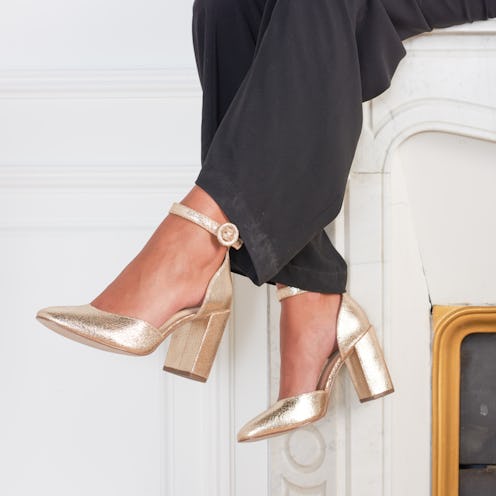Fashion
Why You Should Think Twice Before Wearing Heels

High heels have been a staple of traditional women's fashion for decades. Some women hate them, some women can't leave the house without them. However, whether you wear them every day or just on special occasions, there are things everyone who wears heels should know.
It's pretty safe to say that high heels are not usually the most comfortable option on the planet, and according to The Washington Post they contribute to the $3.5 billion spent annually in the United States for women's foot surgeries. Podiatric surgeon and spokesperson for the American Podiatric Medical Association Marlene Reid told The Post that many of her female patients push through pain caused by heels for months, only to come to her when they have torn ligaments and stress fractures.
It's important to know the basics of what high heels are actually doing to your body both long and short term so that you can make well-informed decisions about both your health and style. And in the spirit of making informed daily choices, here are five things every woman should know about high heels.
1. Heels Force Your Body To Compensate
According to the Spine Health Institute in Florida, high heels knock us off balance, forcing our bodies to compensate by forward bending your hips and spine and tensing your back, hip, and leg muscles to remain upright. There is also excess pressure placed on the knees and balls of our feet (aka the space between our arch and our toes). Basically, when we wear heels our bodies are doing a lot of unconscious balancing and correcting so that we don't fall flat on our faces.
2. Heels Can Misalign Your Back
Heels don't just cause our spines to tilt forward; they actively knock our backs out of alignment. According to the Spine Health Institute, our spines normally sit in an S-shape, helping with our bodies natural shock absorption as we walk. When we walk with a bent spine, shock absorption is reduced, and more pressure is put on the nerves in our back. Long-term heel use can lead to chronic lower back pain, tingling, and cramping. Ouch.
3. Running In Heels Can Cause Arthritis
According to a 2013 study in the International Journal of Biomedical Engineering and Technology, running in heels (like to catch a subway train, for example) causes a significant increase in the lateral movement of the knees — meaning the angle at which they move towards and away from each other as we move — definitely straining the knee joint and potentially causing permanent arthritis.
4. The Higher The Heel, The More Foot Damage Incurred
According to the American Osteopathic Association, with every inch of height added to the heel, there is an increase in how hard your toes are being crammed into the point of the shoe. And according to both the AOA and The Washington Post, this can cause corns, bunions, and hammertoe, not to mention permanent nerve damage in the foot.
5. There Are Ways To Reduce The Damage
OK, so I've been spending a lot of time hating on high heels in this article, but there are some definite things you can do to reduce the amount of damage they wreak on your body when you wear them. The American Osteopathic Association recommends limiting your heels to an inch and a half or less, and if you do wear a higher heel, try to avoid pointy stilettos, instead opting for a thicker heel that will distribute your body weight more evenly. They also recommend purchasing insoles for all of your heels to help with shock absorption, and to take the time to stretch your calves daily.
If you've been noticing a lot of back pain and discomfort during or after wearing high heels, you may want to seriously consider what they could be doing to your body long term. Because as osteopathic physician Dr. Natalie Nevins said in an article for the American Osteopathic Association, "Your feet are, quite literally, your base of support. If your feet aren’t happy, nothing above them will be."
Images: Luc TEBOUL/Moment/Getty Images; Giphy